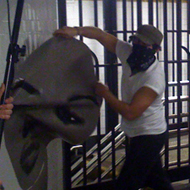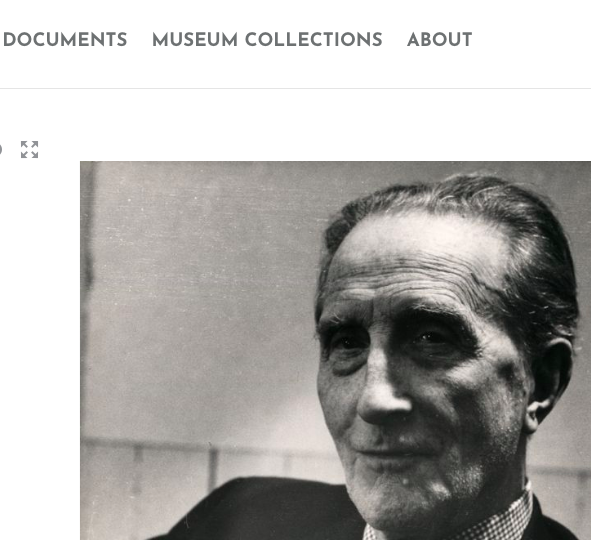In RiP: A Remix Manifesto, Montreal-based filmmaker Brett Gaylor analyzes the effects of digital media on intellectual property.
The film is ultimately concerned with the question of who precisely owns any given piece of art. When does the public domain distinguish itself from private ownership — particularly in this age of digital distribution and replication? RiP brings these issues to life in an invigorating, fascinating way. Each sequence raises questions about our collective notions of intellectual property, rights and residuals, forcing us to think about and rethink our positions on each issue. (In an appropriate and playful note at the end, the film invites viewers to sample and rework RiP in any way they see fit.)
Focusing on Girl Talk, the Rolling Stones, and Andy Warhol, Gaylor indicates the classic Canadian liberal position in favor of “copy left,” but also highlights what he calls the artistic historical necessity to lift, appropriate and steal. With the recent euphoria over Shepard Fairey’s infringement of the AP’s Obama photograph, this seems like a timely film. More from the CBC.
According to yesterday’s WSJ, some visual artists are better off dead. Well not quite, but better off without their royalty checks guaranteed to them under California law. The Journal summarizes this law nicely:
When a work of art is resold in the state, or by a California resident, the seller must set aside 5% of the gross selling price to pay the artist. The law applies to any resale of $1,000 or more within 20 years of an artist’s death, so long as the sale isn’t between dealers.
That’s right: this applies to any resale, and John Baldessari certainly accepts his checks. Donn Zaretsky has an interesting interpretation of the “by a California resident” section of this law. More from the WSJ here.
Yesterday’s NY Times Business section pointed out a growing trend: individuals launching for-profit companies which aim at curing social ills. This had me thinking of artists and arts professionals who think of the nonprofit model as the only viable structure from which to launch art projects or art spaces.
It seems quite obvious that post-September 2008, it is increasingly more difficult for existing nonprofit organizations with established charitable histories to raise funds, so it wouldn’t make much sense to start a nonprofit organization. The NY Times article is fair in pointing out the pros and cons of each, depending on the mission of the nonprofit organization. However, aside from the benefits of tax-exemption (including in some instances tax-deductible donations), it makes very little sense for artists and some arts organizations to initiate a nonprofit corporation. Among the stumbling blocks in forming a nonprofit are filing time frames (5 to 12 months) for nonprofits; lack of ownership (tangible and intangible property complications); limited (or no) control by founder; organizational history in order to procur certain foundation grants (some require a 3-year operationa history); business limitations governed by organizations charitable mission (nonprofits can only “do” what their mission statement expresses); and in general, limited salary ranges.
There is a need for nonprofit organizations, primarily for those that have at the crux of their vision a desire to intervene in and change public needs. Artists and arts organizations should analyze whether or not this is the proper structure for their vision and their financial future. One other viable option is of course the fiscal sponsorship model.
Via Donn Zaretsky another interesting story concerning art and recent fraudulent transactions. According to the LA Times, Chris Burden and Gagosian Gallery are unable to obtain the 100 gold bars they acquired for Burden’s upcoming exhibition.
From the LA Times:
The gold bars originally purchased for the exhibition — which neither the gallery nor the artist would describe in any detail — have been frozen under an order by federal authorities. Reuters reported last week that Gagosian bought the gold in January from a company owned by R. Allen Stanford, the Texas billionaire accused of perpetrating an $8 billion financial fraud.
Update: The LA Times on why the show has been postponed indefinitely.
Last Sunday’s NY Times covers the ongoing controversy over Luis Jiménez’s Blue Mustang. We had some thoughts on this a few weeks ago.
CBS Outdoor, the advertising firm that installed the Museum of Modern Art’s extensive campaign in the Atlantic-Pacific subway station, believes MoMA was complicit in this past weekend’s destruction of several of the ads by Poster Boy and campaign creator Doug Jaeger, CEO of the Happy Corp.

Apparently, back on February 10th, two men met at the Brooklyn’s Atlantic-Pacific subway station at 2 a.m. “One was Poster Boy, or at least someone from his collective, a member of which was arrested earlier this month on criminal-mischief and misdemeanor charges. His accomplice was a less likely culprit: Doug Jaeger, the marketing executive who created the campaign for MoMA.”
According to New York Magazine:
Wearing official MoMA jackets, the two convinced the MTA guards and station police that they were there on official business. Poster Boy and his crew then proceeded to mash up the reproductions in traditional PB-style, meaning Andy Warhol’s Marilyn was made to look as though she had a nose job, and a cutout of a race car was positioned to dive into another painting. When they were done, Jaeger staged a fashion shoot in front of Poster Boy’s reworked creations, using hired models and a professional photographer (the above model’s face is pixelated — says Jaeger, who hopes to sell the images at some point — because he doesn’t have permission to use his/her likeness without consent).
MoMA denies any involvement. But CBS Outdoor isn’t buying it. “They vandalized our property and they really got involved in vandalizing MTA property as well. I think it’s a negative press image that they’re pushing on the MTA and on us.”
News agencies suing artists has become an infectious groove. The Arizona Daily Star filed a copyright infringement lawsuit against the punk band, Awful Truth. In fact, the newspaper sued the band “because it used a slain police officer’s photo to illustrate its album.” The band allegedly used the photo to promote its album “Kill a cop for God.”
According to the blog Twenty Four Bit Music News the lead singer for the band stated:
“It’s a pretty serious picture, and the topic itself is, too. It’s really dark humor, and as much as anybody else, we don’t particularly like cops, so we made a song about it,” Stine said, adding that he refuses to apologize to anyone about the album cover.








